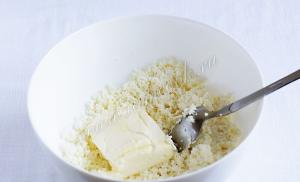What is the minimum dose of insulin. Calculating insulin dosage: treating diabetes correctly
Insulin therapy for diabetes mellitus 1 type
Types of insulin therapy
Intensified or basal-bolus insulin therapy
Long-acting insulin (LAI) is administered 2 times a day (in the morning and at night). Short-acting insulin (RAI) is administered before main meals and its dose depends on the number of bread units (XE) planned to be taken with food, the level of glycemia before meals, insulin requirements per 1 XE at a given time of day (morning, afternoon, evening) - a necessary condition is to measure glycemia before each meal.
Traditional insulin therapy
Long-acting insulin (LAI) is administered 2 times a day (morning and at night) Short-acting insulin (SAI) is administered 2 times a day (before breakfast and before dinner) or before main meals, but its dose and the amount of XE are strictly fixed ( the patient does not change the insulin dose and the amount of XE on his own) - there is no need to measure glycemia before each meal
Insulin dose calculation
Total daily insulin dose (TDID) = patient weight x 0.5 U/kg*
0.3 U/kg for patients with newly diagnosed type 1 diabetes during the period of remission (“honeymoon”)
0.5 U/kg for patients with an average history of the disease
0.7-0.9 U/kg for patients with a long history of the disease
For example, the patient’s weight is 60 kg, the patient has been sick for 10 years, then the SSDI is 60 kg x 0.8 U/kg = 48 U
If the SSDI is 48 units, then the dose of the IPD is 16 units, with 10 units administered before breakfast and 6 units before bedtime
The ICD dose is 2/3 of the SSDI.
However, with an intensified insulin therapy regimen, the specific dose of ICD before each meal is determined by the number of bread units (XE) planned to be taken with food, the level of glycemia before meals, the need for insulin for the first XE at a given time of day (morning, afternoon, evening)
The need for ICD in breakfast is 1.5-2.5 U/1 XE. at lunch - 0.5-1.5 U/1 XE, at dinner 1-2 U/1 XE.
In case of normoglycemia, ICD is administered only for food; in case of hyperglycemia, additional insulin is administered for correction.
For example, in the morning a patient’s sugar level is 5.3 mmol/l, he plans to eat 4 XE, his insulin requirement before breakfast is 2 U/XE. The patient must inject 8 units of insulin.
With traditional insulin therapy, the ICD dose is divided either into 2 parts - 2/3 is administered before breakfast and 1/3 is administered before dinner (If the SSDI is 48 U, then the ICD dose is 32 U, with 22 U administered before breakfast, and 10 U before the hive) , or the ICD dose is divided approximately evenly into 3 parts, administered before main meals. The amount of XE in each meal is strictly fixed.
Calculation of the required amount of XE
The diet for type 1 diabetes is physiological isocaloric, its purpose is to ensure normal growth and development of all body systems.
Daily calorie intake - ideal body weight x X
X - amount of energy/kg depending on level physical activity patient
32 kcal/kg - moderate physical activity
40 kcal/kg - average physical activity
48 kcal/kg - heavy physical activity
Ideal body weight (M) = height (cm) - 100
Ideal body weight (F) = height (cm) - 100 – 10%
For example, a patient works as a cashier in a savings bank. The patient's height is 167 cm. Then her ideal body weight is 167-100-6.7, i.e. about 60 kg, and taking into account moderate physical activity, the daily calorie content of her diet is 60 x 32 = 1900 kcal.
Daily caloric intake is 55 - 60% carbohydrates
10 - 15% protein
Accordingly, the share of carbohydrates accounts for 1900 x 0.55= 1045 kcal, which is 261 g of carbohydrates.IXE = 12 g carbohydrates, i.e. Every day the patient can eat 261: 12 = 21 XE.
Breakfast 20 - 25%
Lunch 30 - 35%
Dinner 20 - 25%
Snacks 5-10%
Those. for breakfast and dinner, our patient can eat 4-5 XE, for lunch 6-7 XE, for snacks 1-2 XE (preferably no more than 1.5 XE). However, with an intensified insulin therapy regimen, such a strict distribution of carbohydrates among meals is not necessary.
If you think about it, at first it’s not clear why diabetics should be given hormonal injections. The amount of this hormone in the body of a sick person generally corresponds to the norm, and often it is significantly exceeded.
But the matter is more complicated - when a person has a “sweet” disease, the immune system attacks beta cells human body, the pancreas, which is responsible for insulin production, suffers. Such complications occur not only in type 2 diabetics, but also in type 1 diabetics.
As a result, a large number of beta cells die, which significantly weakens the human body.
If we talk about the causes of pathology, obesity is often to blame when a person eats poorly, moves little and his lifestyle can hardly be called healthy. It is known that a large number of elderly and middle-aged people suffer from excess weight, but the “sweet” disease does not affect everyone.
So why is it that sometimes a person is affected by pathology and sometimes not? It is largely a matter of genetic predisposition; autoimmune attacks can be so severe that only insulin injections can help.
Types of insulin by duration of action
The vast majority of insulin in the world is produced in pharmaceutical factories using genetic engineering technologies. Compared to outdated drugs of animal origin, modern means characterized by high purification, minimum side effects, stable, well-predictable action. Currently, two types of hormones are used to treat diabetes: human and insulin analogues.
The molecule of human insulin completely replicates the molecule of the hormone produced in the body. These are short-acting agents; their duration of operation does not exceed 6 hours. This group also includes intermediate-acting NPH insulins. Their action time is longer, about 12 hours, due to the addition of protamine protein to the drug.
Insulin analogs are structurally different from human insulin. Due to the peculiarities of the molecule, these drugs can be used to more effectively compensate for diabetes. These include ultra-short-acting agents that begin to reduce sugar 10 minutes after injection, long-acting and beyond long acting, working from 24 hours to 42 hours.
| Type of insulin | Opening hours | Medicines | Purpose |
| Ultra-short | The onset of action is after 5-15 minutes, the maximum effect is after 1.5 hours. | Humalog, Apidra, NovoRapid FlexPen, NovoRapid Penfill. | Use before meals. They can quickly normalize blood glucose. The dosage calculation depends on the amount of carbohydrates coming from food. Also used for rapid correction of hyperglycemia. |
| Short | The effect begins within half an hour, the peak occurs 3 hours after administration. | Actrapid NM, Humulin Regular, Insuman Rapid. | |
| Medium action | Works for 12-16 hours, peak - 8 hours after injection. | Humulin NPH, Protafan, Biosulin N, Gensulin N, Insuran NPH. | Used to normalize fasting sugar. Due to the duration of action, they can be injected 1-2 times a day. The dose is selected by the doctor depending on the patient’s weight, duration of diabetes mellitus and the level of hormone production in the body. |
| Long | The duration of action is 24 hours, there is no peak. | Levemir Penfill, Levemir FlexPen, Lantus. | |
| Extra long lasting | Duration of work – 42 hours. | Tresiba Penfill | Only for type 2 diabetes. The best choice for patients who are unable to inject themselves. |
Insulin therapy for diabetes, pregnancy and children: complications, indications, regimens
- Indications for the use of insulin
- How to create an insulin therapy regimen for type 1 and type 2 diabetes?
- Injection rules
- Traditional and basal-bolus insulin therapy
- Pump therapy
- Insulin therapy in children
- Treatment with insulin during pregnancy
- Possible complications and their prevention
One of the leading methods of treating diabetes mellitus is insulin therapy. It can significantly improve the health of a diabetic (including a child) and eliminate the development of complications. In order for such treatment to be correct, it is necessary to learn everything about the indications for use, the nuances of drawing up a treatment regimen, the rules for administering injections and much more.
Indications for the use of insulin
- pregnancy and future childbirth accompanied by diabetes mellitus;
- significant decompensation of type 2 diabetes mellitus;
- minimal degree of effectiveness when treating the disease with other means;
- significant reduction in body weight.
How to create an insulin therapy regimen for type 1 and type 2 diabetes?
Drawing up an insulin therapy regimen should take into account many nuances.
It is necessary to skillfully combine insulin therapy regimens; correct dose calculation is important, based on the age of the diabetic, the absence or presence of complications, and the “stage” of the disease.
If we talk about a step-by-step procedure, it should look like this: it is necessary to determine whether injections of extended-release insulin at night will be required; if they are necessary, it makes sense to calculate the initial amount, which will subsequently be adjusted.
In order for insulin therapy for type 2 diabetes to be effective, it is necessary to adjust the dosage of extended-release insulin over the next week until the optimal ratio is achieved.
Next, after consulting with an endocrinologist, it is important to determine the need to use the hormonal component before eating sessions and the exact dosage. Insulin therapy for type 1 diabetes also includes:
- calculating the initial amount of short or ultra-short insulin before eating and subsequent adjustment of the ratio;
- experimental determination of how many minutes before eating food the introduction of a hormonal component will be required;
- correct calculation of short-term or ultra-short insulin in cases where it is important to normalize elevated blood sugar over a long period of time.
Injection rules
Specific rules for introducing the hormonal component depend on whether a pump is used or, for example, the procedure is carried out manually. The principles of insulin therapy are extremely simple: a predetermined amount of a component is administered at a fixed time of day.
If this is not pump insulin therapy, then we are talking about the fact that the hormone is injected under the skin into the fatty tissue. Otherwise medicine will not have the desired effect.
The injection can be carried out in the shoulder area or in the peritoneum, upper anterior thigh or outer fold of the buttocks.
The injection area is changed daily, otherwise numerous consequences may be observed: changes in the quality of hormone absorption, changes in blood sugar levels. In addition, the standards exclude injections into modified areas, for example, with scars, scars, hematomas.
For direct administration of the drug, use a regular syringe or pen-syringe. The rules of insulin therapy are:
- The injection site is treated with two swabs soaked in alcohol. One of them treats a larger surface, the second ensures disinfection of the injection area;
- you need to wait about 30 seconds until the alcohol evaporates;
- with one hand a subcutaneous fat fold is formed, with the other hand a needle is inserted into the base of the fold at an angle of 45 degrees;
- Without releasing the folds, you will need to press the piston all the way and introduce the hormonal component. Only after this is the syringe pulled out and the skin fold released.

For type 2 and type 1 diabetics, mixing or diluting different types of insulin may be vital. In this case, to dilute 10 times, you need to use one part of the drug and nine parts of the “solvent”. To dilute 20 times, use one part of the hormone and 19 parts of the “solvent”.
Insulin can be diluted with either saline solution or distilled water. The use of other liquids is strongly not recommended. It is permissible to dilute the presented liquids directly in the syringe or in a separate container before administration.
Traditional and basal-bolus insulin therapy
Traditional and basal-bolus therapy with a hormonal component is provided. In the first case, we are talking about the fact that long-acting insulin is administered twice a day (morning and at night), and the short-acting component is administered either before breakfast and dinner, or before main meals.
However, the dosage of the latter must be fixed, that is, a diabetic cannot change the ratio of insulin and the amount of XE on his own. The advantage of this technique is that there is no need to determine glycemia before eating food.
Indications for insulin therapy for type 2 diabetes mellitus
Every endocrinologist, from the moment of diagnosis of type 2 diabetes, must inform his patients that insulin therapy is one of the highly effective treatment methods today. Moreover, in some cases, insulin therapy may be the only possible, adequate method of achieving normoglycemia, that is, compensation of the disease.

Information about the reserve capabilities of the beta cells of the gland should play a leading role in making decisions about prescribing insulin therapy. Gradually, as type 2 diabetes mellitus progresses, beta cell depletion develops, requiring immediate transition to hormone therapy. Often, only with the help of insulin therapy can the required level of glycemia be achieved and maintained.
In addition, insulin therapy for type 2 diabetes may be required temporarily in some pathological and physiological conditions. The following are situations when insulin therapy for type 2 diabetes is required.
- Pregnancy;
- Acute macrovascular complications such as myocardial infarction and stroke;
- A clear lack of insulin, manifested as progressive weight loss with normal appetite, the development of ketoacidosis;
- Surgical interventions;
- Various infectious diseases and, first of all, purulent-septic in nature;
- Unsatisfactory performance of various diagnostic research methods, for example:
- fixation low level C-peptide and/or insulin in the blood on an empty stomach.
- repeatedly determined hyperglycemia on an empty stomach in cases where the patient takes oral hypoglycemic drugs, follows a regimen of physical activity and diet.
- glycosylated hemoglobin more than 9.0%.
Points 1, 2, 4 and 5 require a temporary switch to insulin. After stabilization of the condition or delivery, insulin can be discontinued.
In the case of glycosylated hemoglobin, its monitoring should be repeated after 6 months. If during this period of time its level decreases by more than 1.5%, you can return the patient to taking glucose-lowering tablets and stop using insulin.
If there is no noticeable decrease in the indicator, insulin therapy will have to be continued.
Treatment strategy for the progression of type 2 diabetes mellitus In the natural progression of type 2 diabetes mellitus (DM), progressive failure of pancreatic beta cells develops, so insulin remains the only treatment that can control blood glucose in this situation.
About 30-40% of patients with type 2 diabetes require long-term insulin therapy for constant glycemic control, but it is often not prescribed due to certain concerns of both patients and doctors.
Early initiation of insulin when indicated is important in reducing the incidence of microvascular complications of diabetes, including retinopathy, neuropathy and nephropathy. Neuropathy is the leading cause of non-traumatic amputations in adult patients, retinopathy is the leading cause of blindness, and nephropathy is the main factor leading to end-stage renal failure.
The UK Prospective Diabetes Study (UKPDS) and the Kumamoto study demonstrated a positive effect of insulin therapy in reducing microvascular complications, as well as a strong trend toward improved outcome in terms of macrovascular complications.
The DECODE study assessed the relationship between overall mortality and glycemia, especially postprandial glycemia. The Diabetes Control and Complications Trial (DCCT) in Type 1 Diabetes established stringent standards for glycemic control.
American Association Clinical Endocrinology (AACE) and the American College of Endocrinology (ACE) have established an HbA1c target of 6.5% or less, as well as fasting glucose targets of 5.5 and 7.8 mmol/L for postprandial glycemia (at 2 hours). after eating).
Quite often these goals are difficult to achieve with oral monotherapy, so insulin therapy becomes necessary. Consider prescribing insulin as initial therapy for all patients with type 2 diabetes.
It is well known that glucose toxicity may be a factor in the difficulty of achieving adequate glycemic control. Insulin therapy almost always controls glucose toxicity.
As the toxic effect of glucose is leveled out, the patient can either continue monotherapy with insulin, or switch to combination therapy with insulin in combination with tableted glucose-lowering drugs, or to oral monotherapy.
Failure to strictly control diabetes mellitus leads to an increased risk of complications in the future, in addition, there are suggestions and facts indicating that timely and early control ensures the effectiveness of therapy in the future in terms of achieving better control.
There are two insulin therapy regimens: traditional and intensive. The first involves constant doses of insulin calculated by the doctor. The second includes 1-2 injections of a pre-selected amount of a long hormone and several short ones, which are calculated each time before meals. The choice of regimen depends on the severity of the disease and the patient’s readiness to independently control blood sugar.
Traditional mode

The calculated daily dose of the hormone is divided into 2 parts: morning (2/3 of the total) and evening (1/3). Short insulin is 30-40%. You can use ready-made mixtures in which short-term and basal insulin have a ratio of 30:70.
The advantages of the traditional regimen are the absence of the need to use dose calculation algorithms daily, rare glucose measurements, once every 1-2 days. It can be used for patients who are unable or unwilling to constantly control their sugar.
The main disadvantage of the traditional regimen is that the volume and timing of insulin injections does not correspond at all to the synthesis of insulin in a healthy person. If a natural hormone is secreted to supply sugar, then everything happens the other way around: in order to achieve normal glycemia, you have to adjust your diet to the amount of insulin administered.
As a result, patients are faced with a strict diet, any deviation from which can result in a hypoglycemic or hyperglycemic coma.
Intensive mode
Intensive insulin therapy is generally recognized throughout the world as the most progressive insulin administration regimen. It is also called basal-bolus, as it is capable of simulating both constant, basal, hormone secretion and bolus insulin released in response to an increase in blood glucose.
The undoubted advantage of this regime is the absence of a diet. If a patient with diabetes has mastered the principles of correct dosage calculation and glycemic correction, he can eat like any healthy person.
In this case, there is no specific daily dose of insulin; it changes daily depending on dietary habits, level of physical activity or exacerbation concomitant diseases. There is no upper limit for the amount of insulin; the main criterion for the correct use of the drug is glycemic levels.
Diabetic patients using an intensive regimen should use a glucometer several times during the day (about 7) and, based on the measurement data, change the subsequent dose of insulin.
Numerous studies have proven that achieving normoglycemia in diabetes mellitus is possible only with intensive use of insulin. In patients, glycated hemoglobin decreases (7% versus 9% on the traditional regimen), the likelihood of retinopathy and neuropathy decreases by 60%, and nephropathy and heart problems are approximately 40% less likely.
Is it permissible to replace pills with injections?
There are several options for insulin injections, each of which has a number of nuances.
Table No. 1. Types of insulin injections
Before answering this question, you need to know which pills are not suitable for diabetics and which pose an immediate danger. If they are dangerous, then they should not be taken and the sugar level is not taken into account.
It is necessary to use injections; if everything is done correctly, then a person’s life can be significantly extended. When consuming harmful pills, a person’s condition worsens, although the glucose level decreases for a short time.
Some patients first go on a strict diet with low carbohydrate intake. And many consume the drug metamorphine.
With hormonal injections, it happens that the sugar level sometimes exceeds the permissible value, although the person does not violate strict diet and does not interfere with administered insulin doses. This means that it is difficult for the pancreas to cope with such a large load, then you need to carefully increase insulin doses so that diabetic complications do not develop.
Such negative sugar levels are often observed in morning hours, on an empty stomach. To normalize the condition, you need to have dinner early, no later than 19.

00, and before going to bed inject a small amount of the substance. After each meal, you need to change your glucose level after a couple of hours.
If at this time it is slightly elevated, then this is not critical. Ultra-short injections between meals will help.
Once again, it should be said about the order - first of all, the sick person goes on a strict diet with a low amount of carbohydrates, then moderate consumption of metamorphine begins. If your sugar levels go up, you should not hesitate, but use hormonal injections.
If a person has started injections, the diet should also be strictly followed, and special attention should be paid to the glucose level, it should be the same as in healthy people.
Insulin is destroyed in the body under the influence of gastrointestinal juice; hydrochloric acid and digestive enzymes are to blame for this. Despite the high level of development of modern pharmacology, there are currently no tablets that have the most positive effect. And even active ones scientific research Pharmaceutical companies are not pursuing this direction.
The pharmaceutical market offers the use of an inhalation aerosol, but its consumption is associated with certain difficulties - the dosage is difficult to calculate, so its use is not recommended.
If a diabetic consumes a large amount of carbohydrates, then he needs large quantities insulin, which also entails danger, so once again it must be said about the obligatory adherence to a low-carbohydrate diet.
Insulin therapy is absolutely necessary for all patients with type 1 diabetes. Patients with type 2 and other types of the disease also often require this particular treatment option.
What is modern insulin therapy? These are multiple daily injections of artificial pancreatic hormone. The drug is injected into the subcutaneous fat layer. Insulin doses are calculated in each case individually.
Who prescribes the drug and its dosage
The specific types of insulin are selected by the attending physician. There are 2 main types of artificial hormone.
Highlight:
- basal insulin (intermediate-acting and long-acting);
- postprandial (short and ultrashort).
To completely meet the insulin needs of a patient with diabetes, a regimen combining two different drugs is usually necessary.
To maintain normal metabolism, a basal artificial hormone is required. After eating a carbohydrate meal, there is a need for postprandial insulin. It keeps blood sugar within target levels after meals.
The insulin therapy regimen is prescribed by an endocrinologist. Typically, treatment with these injectable drugs begins in the hospital. Doses can be adjusted according to outpatient setting. But this requires constant self-monitoring with a glucometer and good theoretical preparation of the patient.
The endocrinologist also prescribes doses of insulin. But these figures can be considered conditional. The need for the drug changes almost daily. Therefore, the patient himself must regularly adjust his insulin doses.
Insulin requirement
Each patient has his own need for basal and postprandial insulin. What factors may require a larger dose of the drug? First, the type of disease plays a role. In patients with type 2 diabetes, the need for insulin is higher, since the tissues are less sensitive to this hormone. Secondly, body weight matters. The more extra pounds, the higher the need for insulin. Thirdly, an increase in dose is provoked by concomitant conditions and diseases. A lot of insulin is required during pregnancy, during various inflammatory processes, and during periods of emotional stress.
On average, a patient needs up to 1 unit of artificial hormone per kilogram of body weight. This means that a patient weighing 80 kilograms can receive about 80 units of insulin (basal and postprandial doses per day are summed up). Sometimes the need is much higher, sometimes it is significantly lower. It is believed that in Russia most patients receive too small doses of insulin. Because of this, blood glucose levels in patients remain high, and complications of diabetes quickly develop.
How do basal and postprandial insulin relate to each other? On average, their share in the daily scheme should be approximately equal (50%/50%).
Which patients may have a lower proportion of postprandial insulin?
Less short (ultra-short) hormone is needed:
- elderly;
- with a sedentary lifestyle;
- with a small amount of carbohydrates in the diet.
Adjusting insulin doses before meals
Postprandial hormone is administered before each main meal. Your doctor's recommendations may include specific numbers in insulin units before breakfast, lunch, and dinner. Please remember that these appointments are indicative.
The dose of insulin before meals depends on how many carbohydrates will be taken in food. To adjust the dose you need to know your carbohydrate ratio. A doctor in a hospital can clarify this indicator. You can also find out the coefficient yourself.
To clarify the carbohydrate ratio, analyze the self-monitoring diary. You need to have information several days (weeks) in advance. The coefficient is calculated separately for breakfast, lunch, and dinner.
Required data:
- blood sugar before meals;
- blood sugar 2 hours after eating;
- number of bread units;
- dose of short (ultra-short) insulin.
It is advisable to calculate the carbohydrate coefficient on those days when fasting blood sugar met the target parameters. First, analyze data on breakfasts, lunches, and dinners over several days. Calculate how many units of insulin you made for each unit of bread on average. Take this ratio as the initial carbohydrate ratio. In the following days, take measurements before and after meals, count bread units, and take insulin in calculated doses.
For example, you found that for breakfast you needed an average of 2 units of insulin per 1 piece of bread. Coefficient 2 Units: 1 XE. In the morning before eating, count how many carbohydrates you will eat. If your breakfast contains 4 bread units, then we get the dose of insulin by multiplying 4 by 2. The result is 8 units. This is the dose that should be administered before meals.
We calculate doses for lunch and dinner in the same way. Next, we analyze the compliance of the carbohydrate coefficient.
If, two hours after breakfast, blood glucose did not increase or increased slightly (up to 3 units), then enough insulin was made for each unit of bread. This means that the selected carbohydrate ratio is accurate.
If the sugar increased more strongly, then the drug was not enough. The carbohydrate ratio must be changed by increasing the insulin dose by 1 XE.
It is also possible that hypoglycemia occurred 2–3 hours after breakfast. This may indicate an overdose of insulin before meals. In this case, the carbohydrate coefficient also needs to be changed - reduce the insulin dose by one XE.
By determining your carbohydrate ratio, you can accurately dose your insulin before meals every time.
Dose adjustment for high sugar
If, according to the glucometer, blood sugar is higher than the target values, then an increase in insulin doses is required.
Short (ultra-short) hormone is corrected. Specific doses depend on individual sensitivity to the drug.
Typically, for every 2 extra units of blood glucose, 1 unit of insulin is given.
For example, the goal for morning blood sugar is up to 7 mmol/l. According to the glucometer, the result before breakfast is 13 mmol/l. We find the extra sugar units (13–7 = 8 mmol/l). For every 2 units of sugar, inject 1 unit of insulin (8:2 = 4 units).
Thus, to reduce blood glucose in this example, an additional 4 units of insulin must be administered. In addition, the patient needs to calculate the dose of insulin for food based on bread units and administer it too.
How to change insulin doses before exercise
If you are planning long-term intense physical activity, then the dose of insulin should be reduced.
What sports and jobs should you consider? We carry out the correction if the load lasts more than 120 minutes and increases the heart rate by at least 30%.
We reduce the dose of insulin that will act during exercise. For example, if physical activity will be at 17 o’clock, then we adjust the short hormone before lunch. Usually it is enough to reduce the calculated dose (per bread units) by 25–50%.
For example, you plan to eat 5 breads for lunch, the carbohydrate ratio is 3 units: 1 XE. There will be a sporting event at 4 p.m.
Today, the cheapest and most common option for administering insulin into the body is the use of disposable syringes.
Due to the fact that less concentrated solutions of the hormone were previously produced, 1 ml contained 40 units of insulin, so in the pharmacy you could find syringes designed for a concentration of 40 units/ml.
Today, 1 ml of solution contains 100 units of insulin; appropriate insulin syringes of 100 units/ml are used for its administration.
Since both types of syringes are currently available for sale, it is important for diabetics to carefully understand the dosage and be able to correctly calculate the administered rate.
Otherwise, if they are used incorrectly, severe hypoglycemia may occur.
Markup features
So that diabetics can easily navigate, a graduation is applied to the insulin syringe, which corresponds to the concentration of the hormone in the bottle. Moreover, each marking division on the cylinder indicates the number of units, not milliliters of solution.
So, if a syringe is intended for a concentration of U40, on the marking where 0.5 ml is usually indicated, the indicator is 20 units; at the level of 1 ml, 40 units are indicated.
In this case, one insulin unit is 0.025 ml of the hormone. Thus, the U100 syringe has a reading of 100 units instead of 1 ml, and 50 units at the level of 0.5 ml.
For diabetes mellitus, it is important to use an insulin syringe only at the required concentration. To use insulin 40 units/ml you should buy a U40 syringe, and for 100 units/ml you need to use the corresponding U100 syringe.
What happens if you use the wrong insulin syringe? For example, if a solution with a concentration of 40 units/ml is drawn into a U100 syringe, instead of the expected 20 units, only 8 will be obtained, which is more than half the required dosage. Similarly, when using a U40 syringe and a solution of 100 units/ml, instead of the required dose of 20 units, 50 units will be drawn.
 So that diabetics can accurately determine the required amount of insulin, the developers came up with an identification mark that can be used to distinguish one type of insulin syringe from another.
So that diabetics can accurately determine the required amount of insulin, the developers came up with an identification mark that can be used to distinguish one type of insulin syringe from another.
In particular, the U40 syringe, sold today in pharmacies, has a red protective cap, and the U 100 has an orange protective cap.
Insulin syringe pens, which are designed for a concentration of 100 units/ml, are similarly graduated. Therefore, if the device breaks down, it is important to take this feature into account and purchase only U 100 syringes from the pharmacy.
Otherwise, if the wrong choice is made, a severe overdose is possible, which can lead to coma and even death of the patient.
Therefore, it is better to purchase a set of necessary tools in advance, which will always be kept at hand, and protect yourself from danger.
Needle length features
To avoid mistakes in dosage, it is also important to choose needles of the right length. As you know, they come in removable and non-removable types.
Today they are produced in lengths of 8 and 12.7 mm. They are not made shorter, since some insulin bottles still have thick stoppers.
Also, needles have a certain thickness, which is indicated by the symbol G with a number. The diameter of the needle determines how painful the insulin will be injected. When using thinner needles, the injection on the skin is practically not felt.
Determining the division price
Today you can buy an insulin syringe at the pharmacy, the volume of which is 0.3, 0.5 and 1 ml. The exact capacity can be found by looking at the back of the package.
Most often, diabetics use 1 ml syringes for insulin therapy, which can have three types of scales:
- Consisting of 40 units;
- Consisting of 100 units;
- Graduated in milliliters.
In some cases, syringes may be sold that are marked with two scales at once.
How is the division price determined?
The first step is to find out how much the total volume of the syringe is; these figures are usually indicated on the packaging.
In this case, only the intervals are counted. For example, for a U40 syringe the calculation is ¼=0.25 ml, and for U100 - 1/10=0.1 ml. If the syringe has millimeter graduations, no calculations are required, since the number placed indicates the volume.
After this, the volume of the small division is determined. For this purpose, you need to count the number of all small divisions between one large one. Next, the previously calculated volume of the large division is divided by the number of small ones.
After the calculations have been made, you can dial the required amount of insulin.
How to calculate dosage
The insulin hormone is available in standard packages and is dosed in biological units of action, which are designated as units. Typically, one 5 ml bottle contains 200 units of the hormone. If you make calculations, it turns out that 1 ml of solution contains 40 units of medicine.
Insulin administration is best done using a special insulin syringe, which indicates divisions in units. When using standard syringes, it is necessary to carefully calculate how many units of the hormone are included in each division.
To do this, you need to remember that 1 ml contains 40 units, based on this you need this indicator divide by the number of divisions.
So, with one division reading 2 units, the syringe is filled eight divisions to inject 16 units of insulin into the patient. Similarly, with an indicator of 4 units, four divisions are filled with the hormone.
One vial of insulin is intended for multiple use. The unused solution is stored in the refrigerator on a shelf, but it is important that the medicine does not freeze. When using long-acting insulin, before drawing it into the syringe, shake the bottle until a homogeneous mixture is obtained.
After removing from the refrigerator, the solution must be warmed to room temperature by keeping it indoors for half an hour.
How to take the medicine correctly
After the syringe, needle and tweezers are sterilized, the water is carefully drained. While the instruments are cooling, the aluminum cap is removed from the bottle and the stopper is wiped with an alcohol solution.
After this, the syringe is removed and assembled using tweezers, but you must not touch the piston and tip with your hands. After assembly, a thick needle is installed and the remaining water is removed by pressing the piston.
The piston needs to be installed just above the desired mark. The needle pierces the rubber stopper, descends 1-1.5 cm deep and the remaining air in the syringe is squeezed into the bottle. After this, the needle rises up along with the bottle and insulin is drawn 1-2 divisions more than the required dosage.
The needle is pulled out of the plug and removed, and a new thin needle is installed in its place using tweezers. To remove air, you need to slightly press the piston, after which two drops of solution should drain from the needle. When all the manipulations are done, you can safely inject insulin.
Calculating the dose of insulin is a very important component of therapy. Several types of insulin are used in the treatment of diabetes mellitus; short insulin is injected frequently and requires special consideration in calculations.
A patient with insulin-dependent diabetes mellitus must know how to calculate the dose of insulin, since the person’s further well-being and performance throughout the day will depend on this calculation. If insulin is administered regularly according to the rules, then complications of diabetes mellitus can be delayed for a long time.
Calculation of short and ultra-short insulin
Does the patient even need to take short-acting insulin? This must be identified through careful self-monitoring, strictly following a certain algorithm of actions, which will subsequently allow the formation of an individual treatment regimen.
This approach to treatment for diabetes is called intensive insulin therapy, or basal-bolus therapy. It is this that helps achieve the maximum effect from insulin therapy.
Why do you need to take a few days to research and study your own blood sugar to calculate your insulin dosage? It’s all very simple: if you have severe diabetes mellitus, then it is simply necessary, in addition to extended insulin before the night’s rest and in the morning, to inject a bolus, or short-acting insulin, before each planned meal.
If your blood sugar concentration “jumps” only during a certain period of the day, for example, after dinner, then you will need to change the algorithm a little - perform an additional injection of the hormone only before dinner.
When exactly you need to administer insulin will have to be studied with strict self-control for 3 days. But it is better that you devote the whole week to this.
For the result of self-control to be informative, it is necessary to measure glucose before each meal and after 2-3 hours.
Features of intensive insulin therapy
When all the nuances of dosage are taken into account and an individual calculation of the insulin dose is made, the patient receives the following benefits from the basal-bolus regimen.
- The maximum possible compensation for diabetes mellitus is achieved, while complications develop much later.
- The length and quality of life with diabetes is increasing.
- You do not need to adhere to the strictest eating regimen, as with the standard dose regimen. With the basal-bolus regimen, you can lead a completely active lifestyle with a flexible meal schedule.
- The work of your own pancreas is imitated, which is more physiological.

But we cannot help but mention the disadvantages of this regime:
- constant and regularly frequent monitoring of sugar;
- you need to learn long and painstakingly to “manipulate” blood sugar;
- Hypoglycemic conditions are more common.
Standard dose regimen
If for some reason the patient cannot carry out self-monitoring, then he is prescribed a different insulin therapy regimen, namely traditional insulin therapy, or a standard dose regimen. Each injection of insulin is calculated in advance, regardless of the individual characteristics of the person. This introduction algorithm has more disadvantages than advantages, but still in some cases it has a right to exist. The advantages of this dosage:
- there is no need to study the theory of insulin administration a lot and for a long time;
- no need to identify sugar surges yourself;
- You don't need to control your sugar so often.
The disadvantages of the standard dose regimen include the following:
- the daily routine and diet are very strict;
- mandatory meals at least 5-7 times a day;
- Sufficient compensation for diabetes is not achieved, which leads to the development of complications;
- administration of insulin according to this scheme is not physiological;
- hypoglycemia often develops at night;
- the various circumstances under which it is necessary to reduce or increase the administered dose (stress, stress, fasting) are not taken into account.
We will not stop with this regimen, since all doses and administration algorithm will be suggested by the doctor. All that remains is to strictly follow the instructions.

Intensive insulin regimen
So, for a person to feel good with diabetes, his glucose level must be within the readings: 5.5 mmol/l and 3.5 mmol/l. To achieve this, you need to learn how to correctly calculate the dosage of the hormone to be administered before consuming food, depending on the amount of carbohydrates in this food. And for this, it is advisable to know what a bread unit (XE) is and have a table of products with XE in a visible place (for example, in your phone or on the refrigerator).
If a person has eaten food that does not have carbohydrates, then he does not need to be given insulin. And, conversely, if you plan to eat a piece of cake at a party, then the amount of insulin needs to be increased. And, as always, we must not forget about monitoring insulin before eating food and after 2-3 hours.
The following should be used as short-acting insulin administered before meals:
- Actrapid NM;
- Humulin Regular;
- Insuman Rapid GT or other as prescribed by a doctor.
To urgently lower blood sugar levels, you should always have Humalog, NovoRapid, Apidra - ultra-short insulins with you.
In each specific situation, you need to “start” with different doses of short-acting insulin, which depends on the severity of the condition, the type of diabetes, and the patient’s weight. Several cases should be considered separately to understand how the starting dosage of the hormone is calculated for type 1 or type 2 diabetes.
Severe type 1 diabetes or advanced type 2 diabetes
With this variant of the disease, patients need insulin injections up to 6 times a day. In diabetics with type 2 of the disease, pancreatic cells are subject to the same total destruction as in the first type of disease.
Basic injections are performed with extended-release or peak-free insulin (Lantus, Levemir, Protafan) at night and in the morning. For flexible insulin administration, it is necessary to calculate the dose in accordance with the planned carbohydrate intake.

In order not to make a mistake in calculating the starting dosage of “rapid” insulin, you need to remember the following points:
- short ones include Actrapid NM, Humulin Regular, Insuman Rapid GT, Biosulin R;
- the onset of action in their time range approximately coincides;
- ultra-short (for immediate effect) insulins (Humalog, NovoRapid, Apidra) are activated much faster than the previous ones; read about their dosage below.
In such a clinical situation, when a patient consumes 1 g of carbohydrates, plasma glucose will rise by 0.28 mmol/l, provided that the body weight is 63.5 kg. And one unit of insulin will reduce the rise in glucose by 2.2 mmol/l.
The administration of 1 unit of any short-acting insulin preparation will cover 8 grams of carbohydrates consumed. The same amount of hormone will cover 57 grams of protein.
So, let's start looking at a specific example of calculating the bolus dose in accordance with the amount of carbohydrates in grams and bread units. To do this, you need to have a kitchen scale, which determines the mass of the product down to tenths of a gram. You should also always have a table of bread units in the kitchen and at hand.
For example, for breakfast you plan to consume 7 grams of carbohydrates and 80 grams of protein. This means: 7g/8g and 80g/57g. These ratios are obtained if dietary carbohydrates and proteins are divided by the amount of carbohydrate and protein components of food covered by one unit of insulin. In total, we get 2.27 units of the hormone, which is necessary for breakfast. You should calculate in the same way for each subsequent meal.

We need to remind you that this is how we calculated the starting dose. Take a week to test this amount of insulin administered by measuring your blood sugar 2, 3, 4, and 5 hours after meals. But it is possible to draw a conclusion about the effectiveness of insulin therapy only after 4-5 hours after eating. It is at this time that insulin administered before meals stops working, and sugar from food has already been absorbed.
What is the criterion for correct dosage selection? We determined the insulin dose correctly if glycemia deviates by 0.6 mmol/l in one direction or another from that before meals.
How to change the insulin dose if, 4-5 hours after a meal, glucose deviates from this cherished figure? Then you need to calculate as follows. 1 unit of insulin can lower glycemia by 2.2 mmol/l (if the weight is equal to the previously mentioned 64 kg). If blood glucose, for example, after a morning snack rose by 4 mmol/l from the initial level, this, of course, means that it is necessary to slightly increase the insulin dosage, namely by 4/2.2 = 1.8 units. If the starting dose before breakfast was 2.27 units of insulin, then we will add another 1.8 units to them and get 4.07 units. If, on the contrary, glucose decreased, for example, by 2.5 units from the level before eating, then the dose is reduced by 2.5/2.2 = 1.13 units. Then the final dose will be 2.27-1.13 = 1.14 units. This method of adjustment needs to be tested for at least a week.
If plasma sugar “jumps,” then ultra-short insulin will come to the rescue. In the same case, when the pancreas does produce a certain amount of the hormone, the previously given dosages can cause. Therefore, you need to have glucose or candy with you.
Type 2 diabetes or mild type 1 diabetes
This variant of the disease assumes that the patient has already been prescribed long-acting insulin, which he administers in the morning and before bed. This therapy allows you to maintain baseline insulin levels within normal limits even in the event of a missed meal. But after a snack, sugar levels rise, despite increasing the dose of sugar-lowering medications.

In this case, it is necessary to administer short-acting insulin. It can be calculated using the strict self-control technique described above. This is the only way to achieve a positive result from treatment.
If you are diagnosed with type 1 diabetes with light current(LADA), then taking pills to reduce sugar does not make any sense, and can only cause harm, causing complications in the form of lactic acidosis.
Insulin calculation using XE
XE, or bread units, were introduced into diabetic use for the convenience of counting the amount of carbohydrates in food. You definitely need to have at hand (app on your phone, list in the kitchen) a table of products with bread units. Detailed tables can be found in.
1 XE is equal to 10-12 grams of carbohydrates. You might think that bread units were invented to completely confuse people with diabetes. But this is far from true! Few people always have a kitchen scale at hand. Bread units help to determine by eye the amount of carbohydrates in a serving of a particular food.
For example, a standard “canteen” piece of brown bread weighing 25 grams contains 1 XE. To cover 1XE of carbohydrates eaten, you will need from 1.4 to 2 units of insulin (for each individual). Visually, 1 XE of food with 12 grams of carbohydrates can fit in the palm of your hand. So, by looking at a carbohydrate food, you can determine how much XE it contains and how much short-acting insulin needs to be administered.
Conclusions
At the end of the article, you should summarize and note the main aspects of calculating the dose of short-acting insulin.
- Exclusive self-control and a week allocated to study your own body can help you choose an adequate dose of insulin, which will not allow complications to quickly develop.
- Dose adjustment must occur if the course of the disease worsens, as well as in other situations when the need for this hormone may change (fasting, physical activity, stress, etc.).
- Any changes in your condition should be reported to your doctor.
- A standard dose regimen is acceptable if self-control is impossible for some reason. In this case, it is necessary to strictly adhere to the daily routine.
Remember that even the best professional endocrinologist will not be able to accurately select the optimal dose of insulin for you, he will only be able to monitor your hard work on self-control. Yes, this takes time and patience, but who else, if not you yourself, can keep this disease “in check.”













